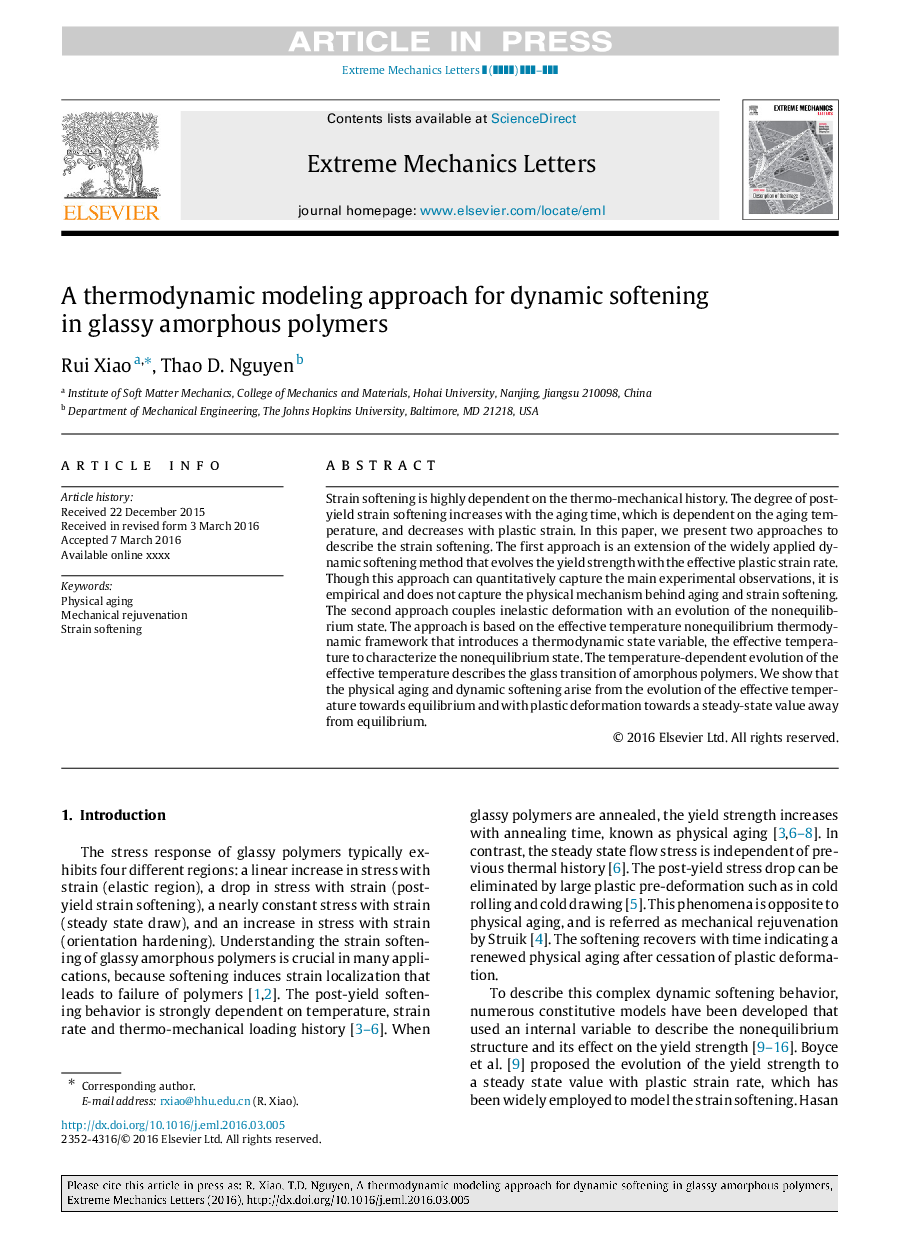| Article ID | Journal | Published Year | Pages | File Type |
|---|---|---|---|---|
| 5014581 | Extreme Mechanics Letters | 2016 | 8 Pages |
Abstract
Strain softening is highly dependent on the thermo-mechanical history. The degree of post-yield strain softening increases with the aging time, which is dependent on the aging temperature, and decreases with plastic strain. In this paper, we present two approaches to describe the strain softening. The first approach is an extension of the widely applied dynamic softening method that evolves the yield strength with the effective plastic strain rate. Though this approach can quantitatively capture the main experimental observations, it is empirical and does not capture the physical mechanism behind aging and strain softening. The second approach couples inelastic deformation with an evolution of the nonequilibrium state. The approach is based on the effective temperature nonequilibrium thermodynamic framework that introduces a thermodynamic state variable, the effective temperature to characterize the nonequilibrium state. The temperature-dependent evolution of the effective temperature describes the glass transition of amorphous polymers. We show that the physical aging and dynamic softening arise from the evolution of the effective temperature towards equilibrium and with plastic deformation towards a steady-state value away from equilibrium.
Keywords
Related Topics
Physical Sciences and Engineering
Energy
Energy Engineering and Power Technology
Authors
Rui Xiao, Thao D. Nguyen,
